Northern Cardinal
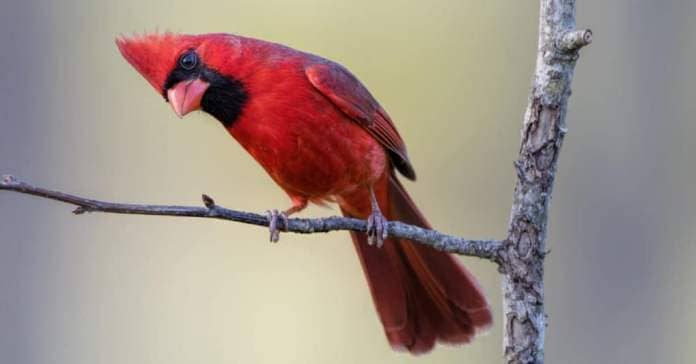
©Bonnie Taylor Barry/Shutterstock.com
Habitat and Range: Northern cardinals are permanent residents in the Eastern half of the United States and Mexico. They are nonmigratory, and they keep their bright plumage all year. They prefer areas with dense foliage, like overgrown fields, marshy thickets, and forest edges. But they also regularly visit backyards.
Features and Coloring: They are large songbirds with long tails, thick bills, and prominent crests. Males are bright red with black face masks, and females are pale brown with red accents.
Diet: Seeds, berries, insects
Vocalizations: Rich “cheer” songs and metallic chips
Nests: Open twig cups in dense shrubs
Desert Cardinal
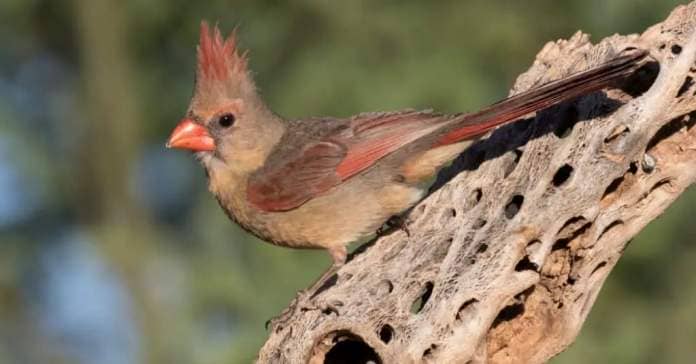
©iStock.com/Dee Carpenter Photography
Habitat and Range: The desert cardinal, or Pyrrhuloxia, is a permanent resident in the Southwestern United States and Mexico. They are closely related to northern cardinals but are habitat specialists that live in the dry, hot desert scrub of the Southwest. You can also find them in mesquite savannas, upland deserts, and farm fields.
Features and Coloring: These medium-sized birds are stocky and feature long tails and tall crests. They have gray and bright red plumage with thick, yellow bills.
Diet: Insects, seeds, and berries
Vocalizations: Thin, short whistled notes
Nests: Open thorny twig cups in shrubs or low trees
Red-crested Cardinal
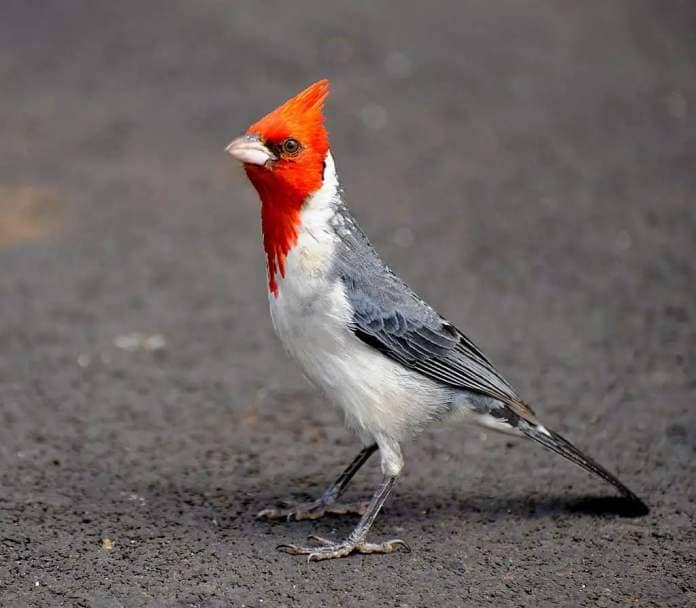
©რობერტ (Robert), CC BY-SA 3.0 , via Wikimedia Commons – License
Habitat and Range: Red-crested cardinals are native to Southeastern South America but have been introduced to Hawaii and Puerto Rico. These birds live close to marshes, lakes, and rivers in tropical and subtropical climates. They inhabit dry shrublands and degraded forests.
Features and Coloring: This species is a medium-sized tanager with a red head, white underparts, and gray upperparts. They have tall, shaggy crests, long legs, and long tails.
Diet: Seeds, fruits, insects, and arthropods
Vocalizations: Sweet, melodious notes
Nests: Twig cups in the fork of a tree
Vermilion Cardinal
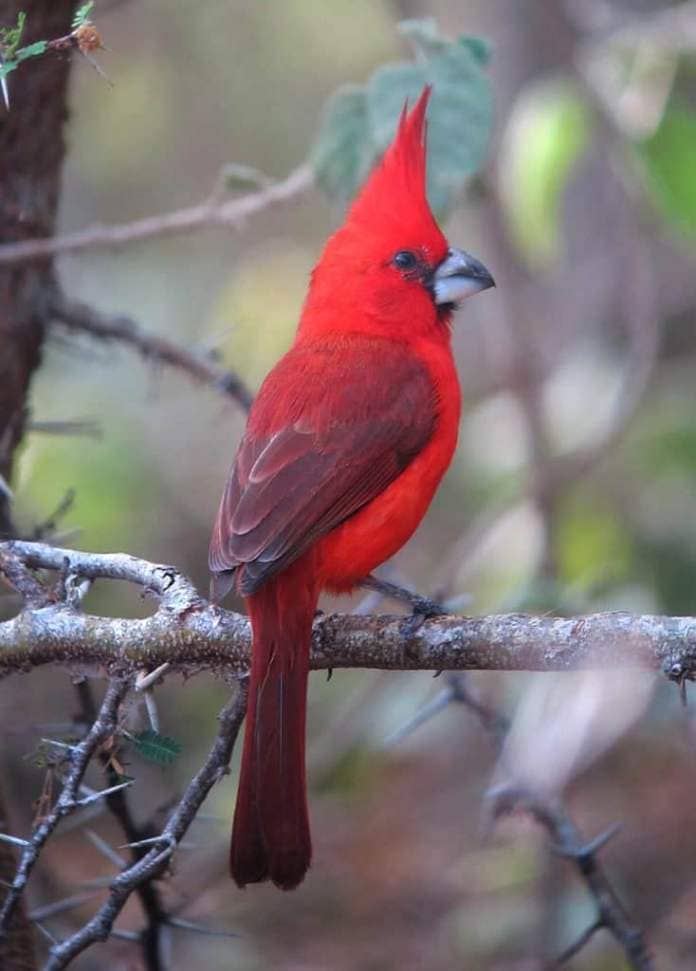
Habitat and Range: The vermilion cardinal lives in Colombia and Venezuela in Northern South America. They are nonmigratory, living year-round in their environments. You can find them in semi-arid scrublands near cacti and other spiny vegetation.
Features and Coloring: Vermilion cardinals are closely related to desert cardinals and feature erect crowns, long tails, and thick bills. Adult males are bright red with dusky wings and tails. Females are more grayish-brown.
Diet: Fruits, seeds, and invertebrates
Vocalizations: Pleasant “tweets” and “chips”
Nests: Open cups placed in cacti
Yellow-billed Cardinal

Habitat and Range: Yellow-billed cardinals occur in Central South America in Brazil, Paraguay, Bolivia, Uruguay, and Argentina. They have also been introduced to Hawaii. They live in moist shrublands, forested marshes, flooded fields, and lakeshores.
Features and Coloring: These birds look similar to the red-crested cardinal but they do not have crests. Adults have red heads, black upperparts, and white undersides. They also feature short yellow to orange bills. Juveniles are browner and do not have bright red heads.
Diet: Seeds and insects
Vocalizations: Repetitive nasal calls
Nests: A deep plant fiber cup placed in small trees and scrub
Red-cowled Cardinal
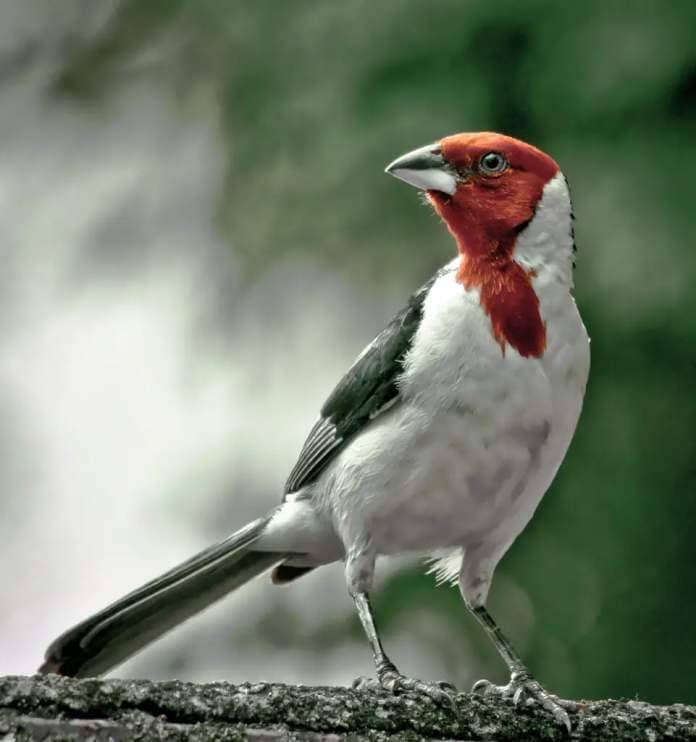
©iStock.com/Irving A Gaffney
Habitat and Range: The red-cowled cardinal is endemic to Brazil. Although, some populations escaped (caged animals) and now inhabit Rio De Janeiro and São Paulo. These birds belonging to the tanager family inhabit semi-open habitats in dry to semi-humid climates. They also live in many urban areas.
Features and Coloring: These tanagers are distantly related to the Cardinalidae family, featuring long tails and short, thick bills. They have bright red heads, white undersides, and streaky black to gray backs, wings, and tails.
Diet: Insects and plant matter
Vocalizations: Fast, melodious whistles
Nests: Open cups placed in branches
Masked Cardinal

©iStock.com/Santimanitay
Habitat and Range: Masked cardinals live in Trinidad, Colombia, and Venezuela. They prefer to inhabit open and moist habitats, such as wet savannas, mangroves (Trinidad only), and forest edges near water. Their suitable climate is tropical and subtropical.
Features and Coloring: Similar to other cardinals, this tanager species features a long tail and thick bill. Their crests are slightly shorter, and their heads are bright red. Their bodies are white below and black above.
Diet: Seeds, fruits, insects, vegetable matter
Vocalizations: Sharp “chip” calls
Nests: Open twig cups low in trees in the marsh
Red-capped Cardinal
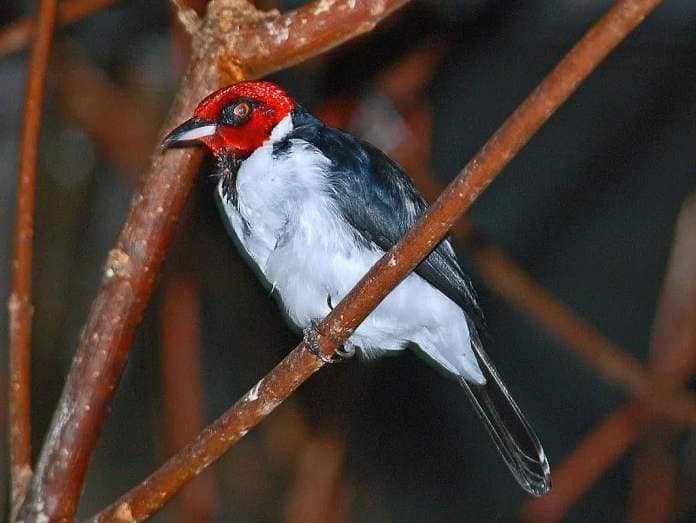
Habitat and Range: The red-capped cardinal inhabits lowlands in Northern South America. They live in Brazel, Colombia, Ecuador, Peru, Bolivia, Venezuela, and the Guianas. You can find them in swamps and mangroves or other semi-open areas near water. You may also see them in towns and cities.
Features and Coloring: These small tanagers have long tails and somewhat longer bills than other species. They have crimson heads with black circles around their eyes. Their bodies are dark above and grayish-white below.
Diet: Insects, fruit, and rice
Vocalizations: Sharp “chip” notes
Nests: Shallow open cups placed in a tree
Yellow Cardinal

©iStock.com/foto4440
Habitat and Range: Yellow cardinals are extremely rare and only found in Argentina, Brazil, Paraguay, and Uruguay. They belong to the tanager family and are the only members of their genus. These birds live in dry savannas, moist shrublands, grasslands, and temperate shrublands.
Features and Coloring: They are large, plump songbirds with short, thick bills, long tails, and small, black crests. Their plumage is bright yellow with darker streaky backs. They also have silver bills and black patches on their faces and throats.
Diet: Seeds, grains, and fruits
Vocalizations: Melodic songs but mainly unknown
Nests: Their nesting habits are also unknown



